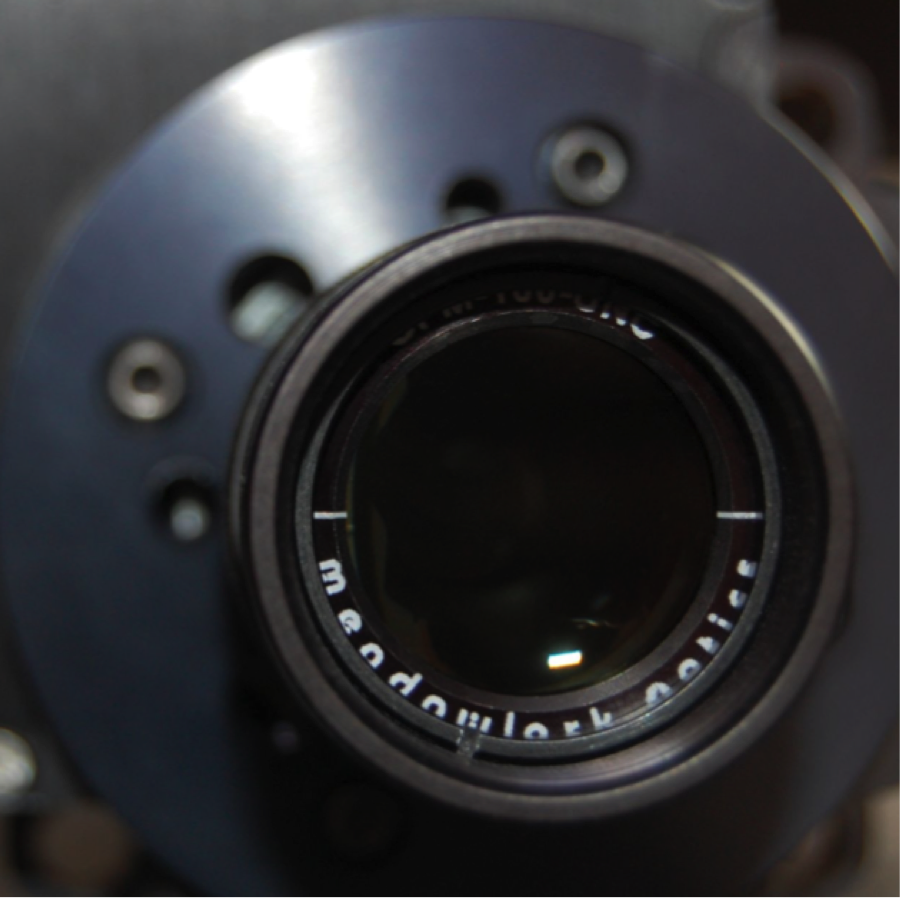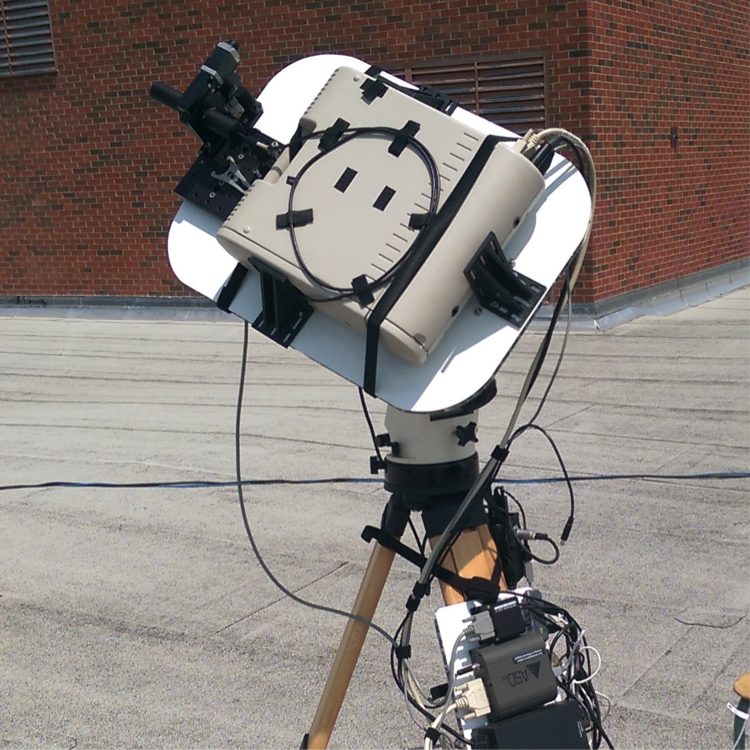Week 8 Log
July 20th - July 24th
I focused mostly on the Spectro-Polarimeter project again this week. I made a second series of calibration measurements using the integrating sphere in an attempt to validate the integrating sphere measurements taken during the previous week. The previous week's results, as well as this week's, have a much lower response than I expected. Consequently, I suspect it will be difficult to replicate the same results from the integrating sphere calibration when using the sun as a source of random polarization.
The Spectro-Polarimeter project still has a particular flaw that until recently I had not found a solution. This flaw centers on the equatorial mount. When an elevation and an azimuth are entered by the user, the equatorial mount will direct itself towards the given elevation and azimuth, changing its elevation and azimuth simultaneously in the process. As a result, the Spectro-Polarimeter is tilted out of its original orientation. Consider the images below.
 |
 |
The image on the left is the linear polarizer for the Spectro-Polarimeter. The white, horizontal marks on each side of the polarizer indicate the polarization axis. As the equatorial mount moves towards a given elevation and azimuth, the polarizer is rotated from its original, horizontal orientation. Hence, the instrument and polarizer are tilted as illustrated in the image on the right.
In order to correct for the unintentional tilt of the polarizer, I will apply a rotation matrix in order to calculate the correct Stokes vector.
 |
This particular rotation matrix will produce a corrected Stokes vector by rotating the vector in a clockwise direction. When I take measurements with the Spectro-Polarimeter, I will have to always record the angle the instrument is tilted using a digital level. Note, the rotation matrix here uses 2θ since this situation deals with intensities rather than amplitudes.
 |
I concluded the week by taking both Spectro-Polarimeter measurements and performing a Solar Radiometer calibration on Friday.